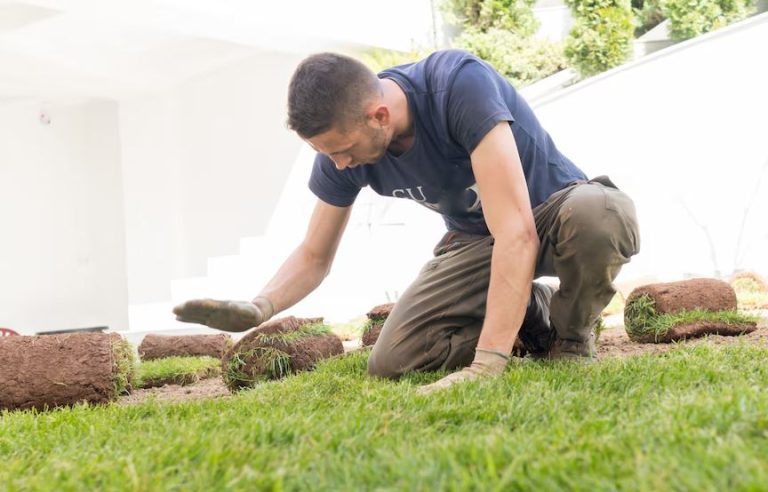Artificial turf is becoming more and more popular in backyards all over the world as the days get warmer and summer approaches. The time spent battling weeds, watering lawns, and caring for delicate grass is long gone. Turf installation is now a very popular option for homeowners looking for a flawless, low-maintenance lawn without the work. Artificial grass is incredibly effective for a wide range of purposes, whether you’re envisioning the ideal green area for family get-togethers or you just want to forego the weekly lawn care.
Artificial turf is much more resilient and requires less upkeep than real grass, yet it still looks remarkably similar. It’s more than just a yard makeover; it’s a revolutionary way to save water, time, and the environment. With some preparation and a few basic tools, installing turf is a simple project that anyone can complete. This is all the information you need to create the lush, green area you’ve always desired in your backyard.
Materials You’ll Need
| Item | Description | Cost Estimate |
|---|---|---|
| Shovel | For removing grass and soil. | $20 – $30 |
| Weed Barrier Fabric | Prevents weed growth beneath the turf. | $10 – $25 per roll |
| Paver Base Gravel | Creates a stable sub-base for the turf. | $50 – $100 per ton |
| Leveling Sand | Helps achieve a smooth, level surface. | $25 – $50 per bag |
| Turf Rolls | Artificial grass, typically available in 15-foot rolls. | $2 – $4 per square foot |
| Turf Adhesive | Secures the seams between turf rolls. | $15 – $30 per gallon |
| Landscape Nails | For securing the turf along edges. | $10 – $20 per box |
| Infill Sand | Adds weight and stability to the turf. | $50 – $100 per bag |
A Comprehensive Guide to Turf Installation in Your Backyard
Step 1: Ground preparation
Making the right preparations is essential before you roll out your immaculately green lawn. Start by clearing the area where the turf will be installed of any existing grass and debris. This includes any rocks, roots, or weeds that could interfere with your new turf’s ability to grow and stay stable. For larger areas, think about using a tiller to expedite the process, but a shovel and garden rake will work just fine.
Excavation should begin as soon as the surface is clear. Depending on the desired turf thickness, dig between two and four inches deep. In order to guarantee adequate drainage and a level surface for the turf to rest on, this step is essential. Your turf won’t experience problems like uneven surfaces or inadequate drainage if you dig it properly.
Step 2: Add a Base Layer
Laying down a base layer is the next stage of the procedure. To begin, dig a paver base gravel that is two to three inches deep. This foundation will give your turf the support it needs and make the area conducive to drainage. To create a firm, stable foundation for the turf, compact the gravel with a tamper or compactor after adding it.
Step 3: Install a Weed Barrier
Install a weed barrier fabric to keep unsightly weeds out of your turf. This step is especially helpful because it keeps weeds from growing through the turf and detracting from its aesthetic appeal. Using landscape staples or nails, secure the fabric in place after laying it smoothly over the base layer.
Step 4: Spread Leveling Sand
It’s time to apply a layer of leveling sand after the weed barrier is in place. Evenly cover the base with 1 inch of sand. This makes it easier for water to run off the surface and for the turf to sit evenly. After leveling the sand, smooth it out with a board or screed.
Step 5: Let the Turf Roll Out
The exciting part is about to begin: installing the artificial grass. For a uniform, organic appearance, roll out the turf over the prepared area, making sure the grass blades face the same way. Make sure there are no spaces between the seams if you’re working with several rolls of turf. Using a utility knife, trim the turf to match the perimeter of your backyard.
Step 6: Fasten the Seams and Edges
Now that the turf has been installed, the edges need to be secured. To secure the turf, use landscape nails or staples around its edges. To guarantee a smooth connection, make sure to use seam tape or turf adhesive to join the edges of adjacent turf rolls. In order to prevent the turf from shifting or bunching up over time, this step is crucial.
Step 7: For stability, add infill sand.
The addition of infill sand is the last stage of the installation procedure. To help the grass blades stand upright and weigh down the turf, evenly distribute the sand over its surface. Using a broom to push the sand into the fibers makes the turf look more natural and keeps it in place.
Why Would You Want to Put Turf in Your Backyard?
Numerous advantages provided by artificial turf can greatly enhance how you use your outdoor area. Here are some reasons why putting turf in your backyard is among the most progressive purchases you can make:
- Low Maintenance: You don’t need to fertilize, water, or mow every week. Because turf requires very little care, you can have a lovely lawn without having to do any maintenance.
- Cost-effective: Turf pays for itself over time by removing the need for fertilizer, water bills, and lawn care services, even though the initial installation cost is higher. It’s surprisingly cheap when you think about the savings over time.
- Eco-Friendly: Installing artificial turf reduces the need for dangerous fertilizers and pesticides in addition to saving water. For homeowners who want a green lawn without having an adverse effect on the environment, turf is an eco-friendly option.
- Long-Lasting and Durable: With the right maintenance, artificial turf can last up to 20 years. Pets, heavy foot traffic, and even inclement weather can’t harm it.
- Aesthetic Appeal: Artificial turf offers a picture-perfect lawn that is immaculate throughout the year thanks to its lush, green appearance.
In conclusion
A thoughtful and fulfilling way to create a lovely, low-maintenance outdoor area is to install turf in your backyard. The entire process, from the preliminary planning to the finishing touches, can be straightforward and very satisfying. Artificial grass provides a very efficient solution for any backyard project, whether your goal is to save time on lawn care, use less water, or just have a beautiful lawn all year round. Don’t hesitate any longer; turn your backyard into the verdant haven of your dreams!


